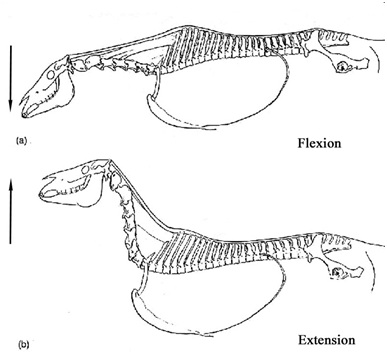
The equine neck and its function during locomotion (3)
The articles about The equine neck and its function during locomotion (1) and The equine neck and its function during locomotion (2) continue in this summary article.
5. Biomechanical models of the equine head and neck complex
The largest load on the lig. Nuchae is transmitted at C2 in maximum flexion of the neck and head. This is reflected anatomically in the large dorsal spinal processes of C2.
Large compressive forces act on the facet joint during flexion and extension of the cervical spine, especially in the caudal region. These forces are applied over small areas of cartilage and may lead to increased degeneration of the facet joint and creates osteoarthritis in mature horses.
6. Overall movement of the neck and its effect on the whole body
It is clear that limb movement is gait specific, however movement of the neck is gait specific too. At walk the overall range of motion of the neck is greater, allowing out of rhythm movements, such as looking around. At the trot a smaller range of motion of the neck increases movement efficiency.
The position of the cervical spine also influences the position and the mobility of the thoracolumbar spine. A low neck creates more movement in the thoracolumbar spine, than a neck that is lifted and flexed. This affects breathing volume of the lungs as this depends on some degree of flexion and extension of the thoracolumbar spine.
> Zsoldos et al., Zoology (2015). All rights reserved to 2015 Elsevier GmbH. Click here for the Pubmed summary


